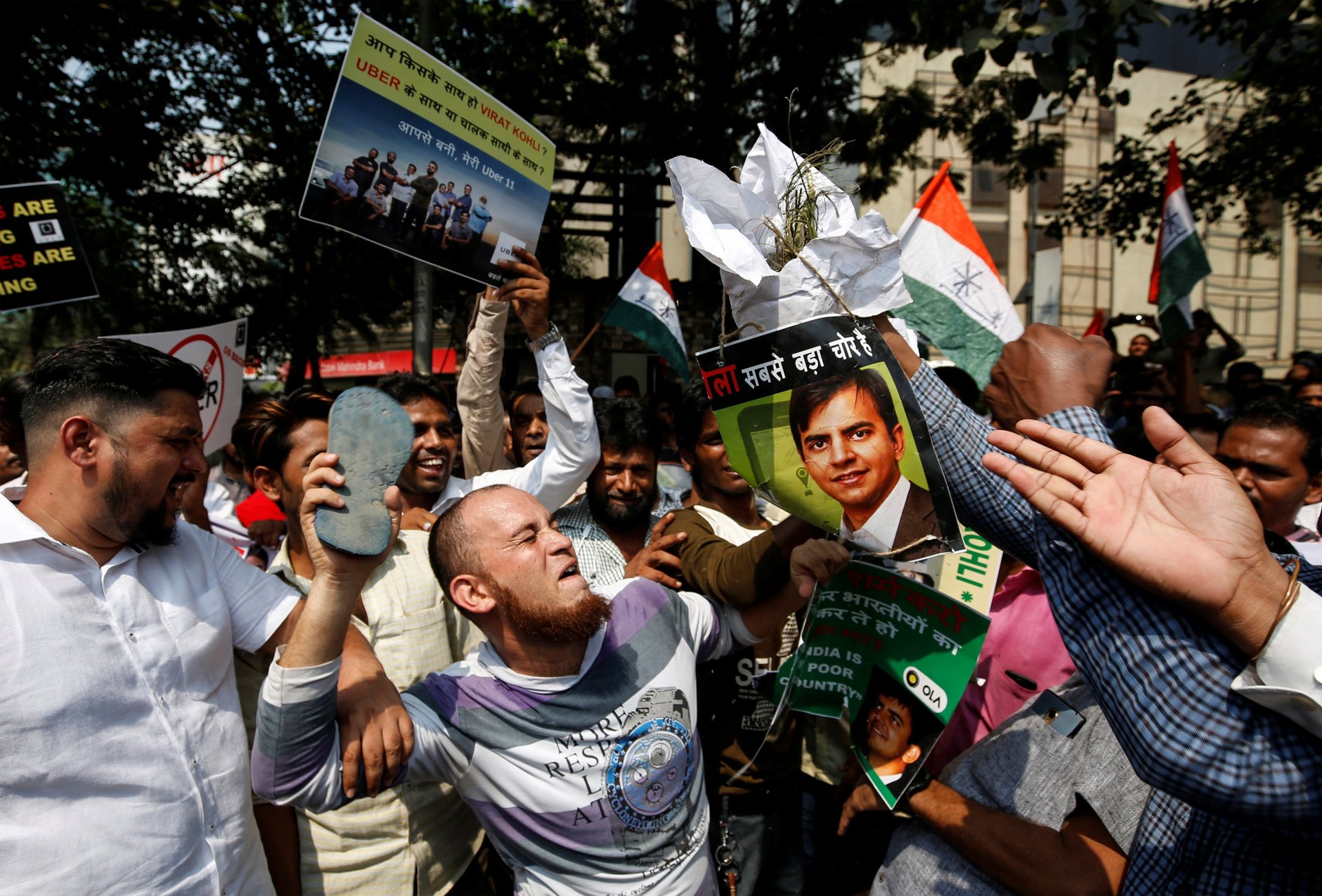Mumbai’s Uber-Ola strike is hurting commuters—but drivers are worse off
A standoff between the taxi drivers’ association and ride-hailing companies Ola and Uber has crippled India’s financial capital, Mumbai.


A standoff between the taxi drivers’ association and ride-hailing companies Ola and Uber has crippled India’s financial capital, Mumbai.
For 10 days now, commuters have struggled to find cabs.
“My office is just six kilometres from my house. I take an Uber every day. But it has been an ordeal in the last one week,” Suvidha Sharma, a Mumbai-based communications professional, told Quartz. “The few cabs plying are exorbitantly priced. (Every day of the last week), it took me entire two hours to cover the six-kilometre distance. My weekend commutes were also slow.”
Mumbai has about 50,000 radio cabs. Since Oct. 22, around 80% of these have been on strike, Sunil Borkar, secretary of Maharashtra Rajya Rashtriya Kamgar Sangh (MRRKS), told Quartz. MRRKS has called the strike, demanding that Ola and Uber increase their fares to offset the impact of rising fuel costs.
Since January, petrol prices in Mumbai have risen around 10% while diesel prices have shot up by 20%.
The demands
The striking drivers want Ola and Uber to increase fares for hatchbacks from the current Rs6-8 per kilometre (km) to Rs16, and for sedans from the current Rs11/km to Rs18. For SUVs, the drivers want a hike from Rs5/km to Rs22.
Their demands also include the reinstatement of blacklisted drivers.
“We are continuing the strike. Yesterday (Oct. 30), the meeting (with Ola and Uber officials) went on for three hours, but we couldn’t reach a consensus on fares,” said Sanjay Yadav, vice-president for BJP’s transport cell in Maharashtra. “Ola and Uber are still adamant. They are ready to increase per km fare, but they will withdraw the payout from base fare and ride-minute charge. This is not acceptable to us.”
The primary reason for the drivers’ demands is dwindling incentives.
Looking to woo drivers in their initial days, Uber and Ola inflated their earnings to between Rs70,000 and Rs80,000 per month. So, many even quit their well-paying jobs to join Uber and Ola as drivers.
However, as more drivers joined the platforms and the supply of cars increased, the companies gradually withdrew the incentives, replacing them with other benefits such as insurance, car-loan assistance, safety measures, and financial aid for children’s education.
The withdrawal of incentives, clubbed with rising fuel prices, have hit incomes. Some drivers say they are forced to work for up to 16 hours a day to make enough money to pay interest on their car loans; others have had to surrender their vehicles.
“Uber acknowledges the ongoing strike in Mumbai has caused significant hardship to its riders and also to its driver partners, most of whom want to drive, but have been intimidated from doing so,” the company said in a statement. “We are proactively exploring all possible options to restore services and best support our driver partners.” Ola declined to comment on the matter.
Forced support
Uber’s claim that its drivers are being forced to stay off the road is not entirely false.
Girish Munjal (28), for instance, is exasperated because not plying his cab over the past 10 days has eaten into his income significantly. “This is the festive season, and the demand is high. We are missing out on it…I don’t see any sense in the strike,” he said.
Munjal still tries to ferry passengers, but that’s risky, he said. Others who tried the same have faced violence and intimidation from the taxi associations and representatives of political parties. There have even been instances of drivers being forced to damage their SIM cards in order to prevent them from logging in to the apps on their phones again, Mumbai-based drivers told Quartz.
Another Mumbai-based driver, Asif, suffered a serious setback when the windshield of his car was vandalised because he would rather earn than join the strike.